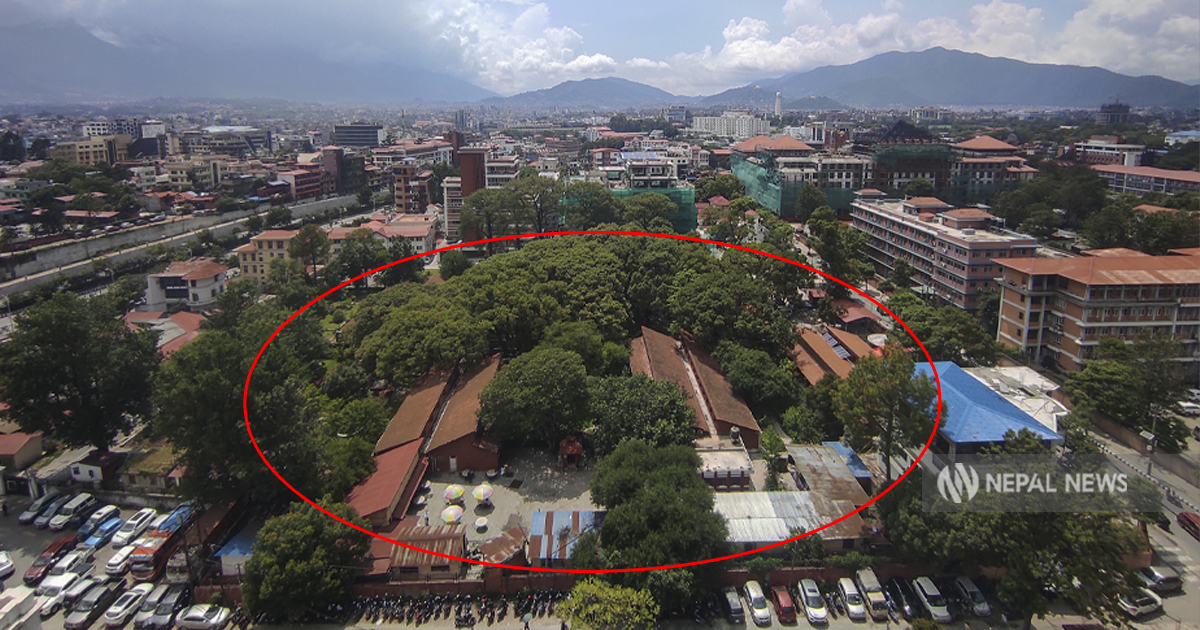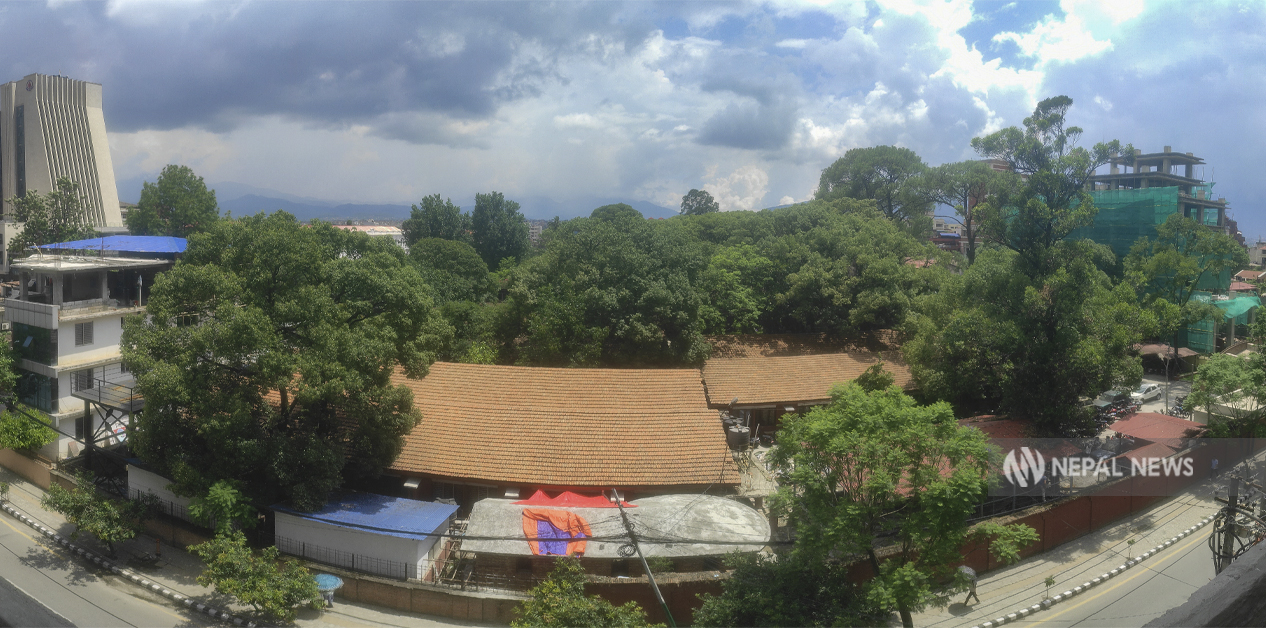
System changed, but justice did not: A case study of one striking incident in Nepal’s judicial administration

KATHMANDU: The land dispute of then-Nepali Congress leader Bharat Shamsher Rana has remained unresolved in court for 31 years. The government has neither returned his roughly 13 ropani of land in Babarmahal nor provided compensation, even though Rana passed away eight years ago.
The property was confiscated on March 23, 1962, following then-King Mahendra Shah’s dissolution of parliament and government in 1960. After the restoration of democracy, the government promised to return the property, but when it was not returned, the affected party filed a case in court in 1994. The case has since spent 28 years in judicial proceedings, with courts issuing orders and government agencies responding.
The Supreme Court, in its most recent ruling, directed the government to present its side of the dispute. Three years have passed since the decision. “Since this dispute arose due to political circumstances rather than ordinary matters, it cannot be subjected to standard procedures and processes,” the joint bench of then-Justices Anil Kumar Sinha and Tanka Bahadur Moktan stated on September 25, 2022.
Sinha and Moktan noted that it is the government’s responsibility to implement the final decision according to the March 17, 1997 mandamus order. The Supreme Court had also emphasized that it is inappropriate to leave sensitive matters such as an individual’s property unresolved for long periods. The order instructed the government to return the confiscated property as quickly as possible in accordance with the official gazette notice.
The Supreme Court, in addition to addressing decades-old decisions, reversed the royal order issued by the Patan Appellate Court on December 18, 2013, and dismissed the writ petition filed there.
The court noted, “There is no evidence to suggest that the government failed to take action regarding the confiscated property as mentioned in the appeal. The June 11, 2002, decision on compensation was acted upon, and since that decision was not annulled, the petitioner’s claims lack factual basis.”
The ruling also highlighted that filing cases in lower courts after the upper court has already decided is incorrect. The Department of Land Reform and Management had approached the Supreme Court in 2014 against the appellate court’s order, but following the Supreme Court’s verdict, the government has not taken significant steps to implement the decision.
“The matter is under study and discussion. The ministry has not reached any conclusion yet,” says Jay Narayan Acharya, chief of the Internal Management Division at the Ministry of Home Affairs. “Repeated decisions on compensation have been made, but the issue remains unresolved. The ministry will take time to make a final decision.”
Verdict of the Supreme Court’s decision on August 26, 2022, and the mandamus order mentioned in the decision
The affected party fears the dispute may worsen rather than be resolved. “The petitioner’s stance is that the houses and land confiscated by then-King Mahendra for supporting democracy cannot belong to the government,” says senior advocate Harishchandra Subedi, who is following the case. “It seems likely to remain entangled in further judicial processes.”
Even senior officials in the relevant government agencies are not optimistic. “The king brought these properties under government control in 1960 for those involved in the pro-democracy movement. Subsequent governments did authorize compensation, but the petitioner has raised objections that remain unresolved,” said a deputy attorney general.
Panchayat fell, but the land was never returned
After the Panchayat system ended and democracy was restored, the government on May 28, 1990, decided to expedite investigations into properties seized from individuals involved in the struggle for democracy after 1960, and to release frozen properties accordingly.
On the same day, then-chief secretary Lok Bahadur Shrestha sent a letter to the Home Ministry secretary citing the decision, initiating the process of returning confiscated properties.
Committee Recommends Compensation After Bharat Shamsher Rana’s Land Could Not Be Returned
Bharat Shamsher Rana had applied to the District Administration Office in Kathmandu for the return of his confiscated property, but the land was not restored. He then approached the courts, and the case continued.
Meanwhile, the Cabinet, in its meeting on April 4, 2002, formed a committee under the coordination of the chief secretary to resolve the issue within the same fiscal year. The committee concluded that returning the land was not possible and recommended that a compensation amount be sent to the Ministry of Finance. Rana himself had participated in that meeting.

The 13 ropani confiscated land of Bharat Shamsher Rana in Babarmahal. Photo Bikram Rai/Nepal News
The decision noted, “Regarding the property confiscated from the individual, as per the notification published in the Nepal Gazette on July 31, 1964, the 12–12–2 ropani of land in the Babarmahal area belonging to the petitioner were acquired by the government for public use.”
The committee decided to submit its proposal to the Cabinet through the Ministry of Home Affairs. Following this, then-Home Secretary Tikadatta Niraula prepared the proposal on July 12, 2002, and the ministers approved it the same day. The Cabinet, on July 15, 2002, decided to implement the proposal as drafted.
A subsequent meeting including the Home Minister, held on August 5, 2005, resolved to take the “necessary action” to provide compensation. At that time, for registration purposes in fiscal year 2002/03, the minimum value was determined to be Rs 800,000 per ropani.
Bharat Shamsher Rana refused to accept the compensation rate and formally requested the return of his property on November 5, 2005. “Otherwise, he requested the government to provide the market value of the land for sale and purchase,” the Ministry of Home Affairs wrote in a letter dated July 21, 2010, to the then Ministry of Land Reform and Management. The letter also noted that Rana had still not received the compensation determined by previous decisions, despite the land being confiscated for political reasons.
The letter highlighted the lack of evidence to verify the location, noting that the Araniko Highway had not yet been constructed and no other proof existed to confirm the exact area.
According to the 1964 Nepal Gazette, Rana’s property in Babarmahal, Kuriya Village, including house and compound land, was described in detail: from eastern alley in the east to the Serman Shrestha compound in the west, Baneshwor Road in the north, and alley in the south. Out of 253 ropani in the area, Rana’s house and land had already been taken over by the government.
Background – How the Land Was Confiscated:
On March 2, 1962, then-Home Secretary Kshetra Bikram Rana issued a gazette notice listing 76 individuals, including Bharat Shamsher Rana, instructing them to vacate their properties within 21 days. The notice stated: “The properties of the above-listed individuals are frozen. Failure to comply with this order will result in confiscation and other penalties.”
Then-Home Secretary Kshetra Bikram Rana stated that he had invoked Sections 3(1) and 3(2)(a) of the Special Circumstances Control Act, 1960 (including subsequent amendments). He noted that this matter could not even be raised in court.
The Nepal Gazette, March 2, 1962
Section 5 of the Act specified: “No court shall question any order issued by His Majesty’s Government under this Act.”
The notice of confiscation was published in the Nepal Gazette on March 23, 1961. Accordingly, out of 253 ropani in Babarmahal Kuriya Village, the portion belonging to Rana—12 ropani, 12 aana, 2 paisa—was taken over by “His Majesty’s Government.”
Rana was the same individual who, after the 1958 elections, became a leader of the main opposition party in the House of Representatives. He was elected from Dhading North, Constituency No. 107, as a leader of the Gorkha Parishad.
After King Mahendra dissolved the government and parliament, he stood in favor of democracy and joined the Congress Party.
In recent times, he was living in Kolkata, India, and was pursuing the case through legal representatives in Nepal.
He passed away on August 11, 2018.